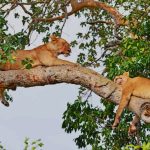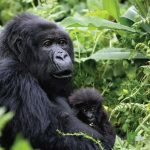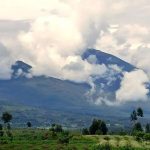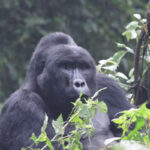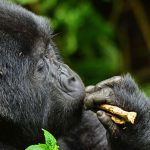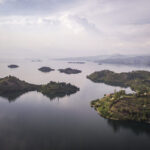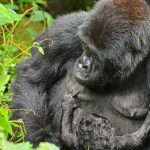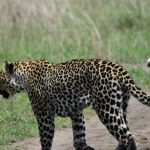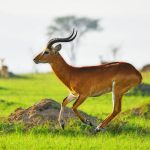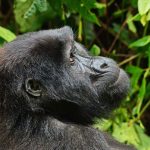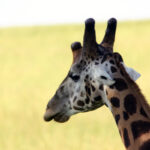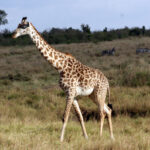What Animals Can I See in the Masai Mara National Reserve?
What Animals Can I See in the Masai Mara National Reserve? The Masai Mara National Reserve is one of the most famous wildlife reserves in the world, renowned for its rich biodiversity and incredible animal sightings. Located in the southwestern part of Kenya, the reserve spans an area of 1,510 square kilometers (583 square miles) and is part of the greater Mara-Serengeti Ecosystem, which includes the Serengeti National Park in Tanzania. The Masai Mara is home to a variety of species, from the iconic “Big Five” to numerous birds, reptiles, and smaller mammals. In this detailed write-up, we will explore the array of animals you can expect to see when visiting this breathtaking reserve.
The Big Five
The Big Five—lion, leopard, elephant, buffalo, and rhinoceros—are the most sought-after animals for many safari-goers visiting the Masai Mara. These animals are often the highlight of any safari, and the reserve offers exceptional opportunities for sightings of all five.
Lions (Panthera leo)
The Masai Mara is renowned for its lion population. Lions are the largest members of the cat family in the reserve and are often spotted resting in the tall grasses or hunting in the open plains. The reserve’s open grasslands provide an ideal environment for lions to roam freely. The famous Mara lion pride is often seen lounging in the sun or stalking their prey, particularly wildebeest and zebra during the Great Wildebeest Migration. One of the most iconic lion sightings in the Mara is when a pride hunts as a group or feeds on a kill.
The Mara also hosts black-maned lions, which are distinctive for their impressive, dark-colored manes. These lions, found mostly in the Mara ecosystem, are highly regarded and have become symbols of strength and power in the region.
Leopards (Panthera pardus)
Leopards are elusive and solitary big cats, making sightings a bit rare but still highly rewarding for those who manage to spot them. The Masai Mara is home to a healthy leopard population, with many leopards preferring to hide in the dense bush or trees. They are often seen perched on branches, particularly during the evening or early morning hours when they are most active.
Leopards are known for their remarkable ability to adapt to various environments, and the Mara’s thick acacia trees and riverine forests provide an excellent habitat. The sight of a leopard lounging in the trees or hunting in the underbrush is a thrilling experience for visitors.
Elephants (Loxodonta Africana)
The Masai Mara is also home to a large population of African elephants. These majestic creatures are often spotted roaming in family herds, especially near the rivers and forests. The elephants of the Mara are well-known for their massive tusks and strong social bonds, living in matriarchal herds led by an experienced female.
Elephants are commonly seen at watering holes, where they bathe, drink, and play in the mud, providing fantastic photographic opportunities. The Mara’s open savannah and riverside habitats offer excellent vantage points for seeing these magnificent creatures up close.
Buffalo (Syncerus coffer)
The African buffalo is another member of the Big Five that is commonly seen in the Masai Mara. Large herds of buffalo are often spotted grazing on the plains or drinking at the riverbanks. Buffaloes are known for their formidable strength and tough social structure, with herds often consisting of hundreds of individuals.
Their imposing presence and tendency to stay close together for protection make buffaloes an unforgettable sight. Though generally not aggressive, they are highly protective of their young and can be dangerous when threatened by predators like lions.
Rhinoceros (Rhinoceros spp.)
Both the black rhino and the white rhino can be found in the Masai Mara, though black rhinos are more commonly seen. Rhinos are more solitary animals compared to the others in the Big Five and can be harder to spot. However, they are often found near the reserve’s bushy areas, where they feed on shrubs and grasses. Conservation efforts in the Masai Mara have helped preserve the population of rhinos, making the reserve one of the best places in Kenya to see these endangered species.
Other Iconic Mammals of the Masai Mara
In addition to the Big Five, the Masai Mara is home to a wide range of other mammals, large and small, that add to the diversity of wildlife in the area.
Cheetahs (Acinonyx jubatus)
The cheetah is one of the fastest land animals and a frequent sight in the Masai Mara. Known for their distinctive black tear markings and slender bodies, cheetahs are often seen sprinting across the plains in pursuit of prey, particularly gazelles. The open grasslands of the Mara are perfect for these fast runners, and many visitors to the reserve are treated to the sight of a cheetah making a high-speed chase.
Unlike lions and leopards, cheetahs are more solitary animals, with males and females living separately except during mating. The Masai Mara is one of the best places in Africa to see cheetahs, especially during the migration period when they take advantage of the abundance of prey.
Hyenas (Crocuta crocuta)
The spotted hyena is another interesting predator found in the Masai Mara. Often misunderstood, hyenas play a critical role in the ecosystem by scavenging carcasses and keeping the balance of the food chain intact. They are highly social animals, living in clans led by a dominant female.
Hyenas are particularly active at night, and visitors may have the opportunity to see them during nighttime safari drives. During the day, they are often seen resting in the shade or near the edges of predator territories, waiting for an opportunity to scavenge.
Giraffes (Giraffa camelopardalis)
The Masai giraffe, a subspecies of giraffe native to this region, is one of the most iconic animals of the Mara. Giraffes are commonly spotted grazing on acacia trees, their long necks allowing them to feed on leaves high up in the trees. These gentle giants are a favorite among photographers, who can capture their graceful movements against the backdrop of the Mara’s sweeping savannah.
The Wildebeest Migration and Its Impact
One of the most iconic events in the Masai Mara is the Great Wildebeest Migration, which occurs between July and October each year. During this period, over 1.5 million wildebeests, along with hundreds of thousands of zebras and gazelles, migrate from the Serengeti to the Masai Mara in search of fresh grazing grounds.
This migration brings a dramatic influx of prey for predators like lions, cheetahs, and hyenas. The spectacle of thousands of wildebeests crossing the Mara River is a thrilling sight for visitors and one of nature’s most remarkable events.
Birdlife in the Masai Mara
Beyond mammals, the Masai Mara is home to an impressive variety of bird species. The reserve is a haven for bird watchers, with over 450 bird species recorded in the area. Some notable species include the saddle-billed stork, marabou stork, Secretary bird, and African fish eagle. The wetlands and riverbanks of the Mara River provide ideal habitats for these avian species, while raptors like eagles and vultures can be seen soaring overhead.
Conclusion
The Masai Mara National Reserve is a wildlife paradise, offering an abundance of opportunities to see some of the world’s most iconic animals in their natural habitat. Whether you’re hoping to spot the Big Five, witness the thrilling wildebeest migration, or simply enjoy the diverse ecosystems and landscapes, the Masai Mara is an unforgettable destination for wildlife lovers. The variety of animals, from the largest mammals to the smallest birds, makes it a must-visit location for any safari enthusiast.




